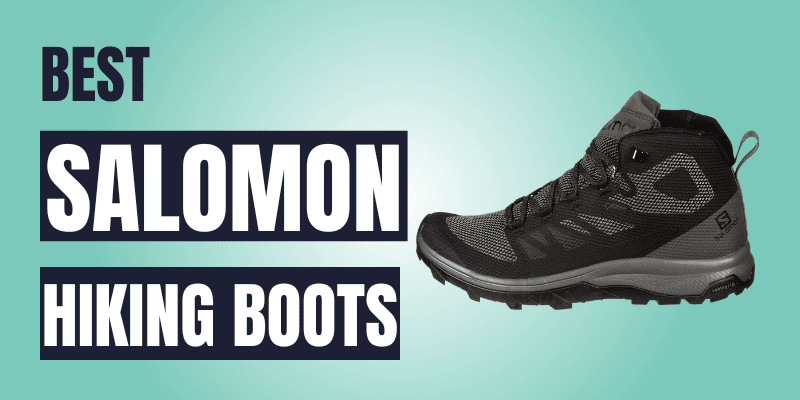Yes, most hiking boots are slip-resistant. They feature a gripping outsole that majorly works towards a non-skid design. The quality of every boot differs to provide you with enough traction level.
Hiking boots are more or less work-like work boots because they are supposed to maintain traction. Compared with work boots, hiking boots are ideal for having more profound, powerful, and smarter stickiness for all terrain. However, there are many factors towards it, so let’s look at them!
Where Do Slip-Resistant Boots Work Best?
If you are buying a hiking boot with slip-resistant properties, it would help you in taking a firm foot grip on mossy and wet rocks.
Likewise, you can also wear hiking boots best for everyday and street walking to wet concert pathways.
Due to the non-slip outsole of the boot, you can wear them for snow hiking and skiing with maintained performance and zero tripping incidents.
Non-skid boots are recommended for hiking and any other feet work, for instance, when you lift the load. Due to their water-resistant design, these boots are more durable and more protected toward the feet.
Is There Any Way to Tell the Boot Is No-Skid?
You cannot spot the hiking boots whether or not they are non-skid. So how can one know that?
It can be tricky, especially if you buy the boot for the first time. Therefore, here I’m presenting you the quick way to that:
- Check the boot’s manufacturer for its non-slip. You can check the hiking boot box for the information. If not on the box, check the boot inside out.
- The non-skid hiking boot usually features patterns or designs on the outsole, making it superb for traction. Checking the boot tread on the outsole is another way to know its non-slip property. Slip-resistant boots readily meet the ASTM standards.
- The slip-resistant boots have a unique design that makes the instant stand out. Some of the non-skid boots feature an outsole pattern that cleans itself (from liquids) while you are walking.
- The anti-slip boot with rounded EVA sole is another factor that confirms its anti-slip property.
Brands That Offer Non-skid Hiking Boots
- Salomon – For all-terrain skid-free performance, Salomon hiking boots are better. They are reasonable for her comfortable interior and powerful grip in snowy conditions. Salomon boot features the Contagrip for vigorous grooves and free functionality to ensure an on-slip design. For instance, the Salomon X Ultra Pioneer Mid CSWP Hiking Boots Women’s is reliable for grip and traction with no siding.
- Columbia – Columbia is one of the top names for providing efficient hiking boots with the non-skid property. They work better for all-terrain, so you have a reason to lean on their performance, such as this Columbia Men’s Newton Ridge Plus Ii Waterproof Hiking Boot Shoe for zero slipping.
- KEEN – KEEN hiking boots have been well-received for their traction, such as this KEEN Utility Men’s Lansing Mid Height Steel Toe Waterproof Work Boots is great for its performance for anti-slip outsole.
Will Non-skid Hiking Boot Prevent Falls and Injury?
No, none of the boots 100% guarantees you the anti-fall approach.
However, unlike regular hiking boots, non-skid footwear will enhance protection against sudden falls and slipping. The outsole plays a part in maintaining balance due to the unique pattern, but you cannot say that a non-skid boot is all and all a safety from dangerous slips. You have to be vigilant at each step anyway!
How to Make Hiking Boots Slip-Resistant?
The good news is you can make your hiking boot a dedicated slip-resistant boot whenever you want. Want to know the easy and efficient ways that help you to make any boot non-skid? Here you go!
- Make the boot outsole gripping and non-skid by rubbing it against concrete, gravel, or other abrasive material. You can also use sandpaper.
- Coat the boot outsole with rubber glue and salt mixture. It will help to change how your boot reacts with liquid and slippery grounds. Apply the layer of glue and dust some salt to ensure non-skid results.
- Perhaps, one of the first ways to make the sleek outsole grip is to make them abrasive, which is true. Score the bottoms of the boot using a sharp knife. However, be careful not to damage the sole too much during the process. The abrasive lines will provide enough traction and stickiness.
- Using hairspray on the boot’s outsole is a clever way of making them non-skid. It’s a quick but temporary solution, though. Depending on how often you hike, you may need to reapply it daily.
- Another way to make hiking boots non-skid is to sprinkle some sand. As you know, sand is abrasive, so it works wonderfully well. Just apply a layer of glue and then add sand to it. When it dries, you will see the difference.
Here is the video which tells “how to make your boots slip-resistant”
Is It Important to Maintain Non-skid Boots?
Yes, keeping them clean is essential. The non-skid boot has a deeper groove pattern that invites mud, tiny rocks, and gravel within its sole. Therefore, you need to clean it each time you return. Moreover, the caked-on mud on the outsole will make the boot slippery, so you must remove the mud thoroughly and nicely.
Do’s to Prevent Falls and Slipping During Hiking
Falling and tripping are not uncommon. But you can control sudden tripping during hiking if you follow wise ways. For instance, walk slowly and vigilantly on sharper hills. Staying alert during trials and when you are ascending is also crucial to not falling. Moreover, you should always go slowly and steadily hiking. It would be better to ensure laces and grip so it doesn’t let you down mid-way.







